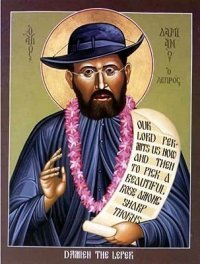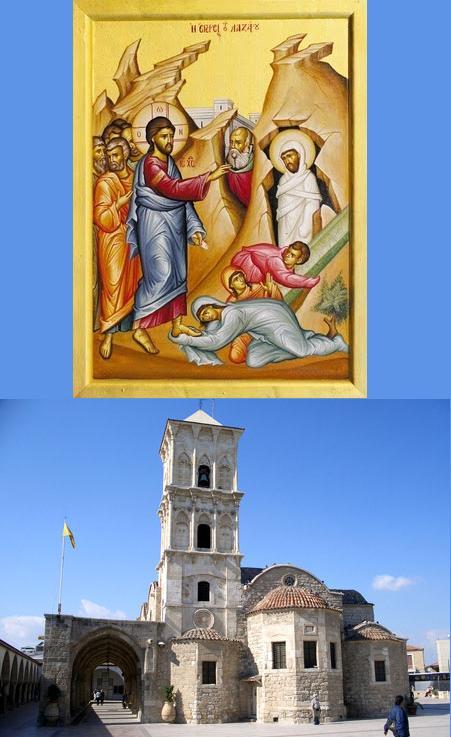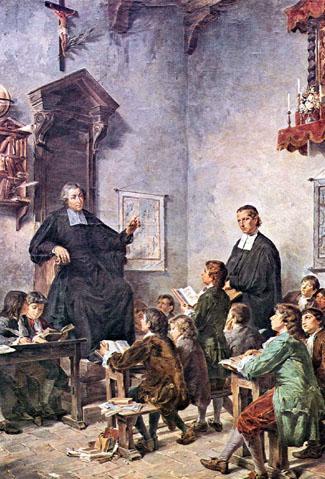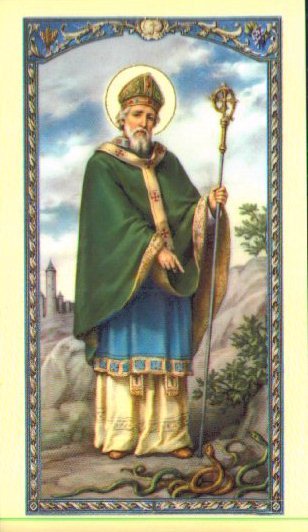|
May 9, 2011 06:43:58
Posted By DelvecchioRC
|

When Joseph de Veuster was born in Tremelo, Belgium, in 1840, few people in Europe had any firsthand knowledge of leprosy (Hansen's disease). By the time he died at the age of 49, people all over the world knew about this disease because of him. They knew that human compassion could soften the ravages of this disease.
Forced to quit school at age 13 to work on the family farm, Joseph entered the Congregation of the Sacred Hearts of Jesus and Mary six years later, taking the name of a fourth-century physician and martyr. When his brother Pamphile, a priest in the same congregation, fell ill and was unable to go to the Hawaiian Islands as assigned, Damien quickly volunteered in his place. In May 1864, two months after arriving in his new mission, Damien was ordained a priest in Honolulu and assigned to the island of Hawaii.
In 1873, he went to the Hawaiian government's leper colony on the island of Molokai, set up seven years earlier. Part of a team of four chaplains taking that assignment for three months each year, Damien soon volunteered to remain permanently, caring for the people's physical, medical and spiritual needs. In time, he became their most effective advocate to obtain promised government support.
Soon the settlement had new houses and a new church, school and orphanage. Morale improved considerably. A few years later he succeeded in getting the Franciscan Sisters of Syracuse, led by Mother Marianne Cope (January 23), to help staff this colony in Kalaupapa.
Damien contracted Hansen's disease and died of its complications. As requested, he was buried in Kalaupapa, but in 1936 the Belgian government succeeded in having his body moved to Belgium. Part of Damien's body was returned to his beloved Hawaiian brothers and sisters after his beatification in 1995.
Damien was canonized by Pope Benedict XVI on October 11, 2009.
When Hawaii became a state in 1959, it selected Damien as one of its two representatives in the Statuary Hall at the U.S. Capitol.
|
|
April 11, 2011 12:19:54
Posted By DelvecchioRC
|
St. Lazarus
was born in Bethany, a small town near Jerusalem. Jesus knew his father Simon and used to visit their home every time he was in the area. He developed so a close friendship with Lazarus, who followed his teaching and ideals.
At the age of thirty Lazarus became very ill. His sisters Martha and Maria informed Jesus of the seriousness of his condition but he did not seem to be concerned. By the time Jesus arrived at Bethany, Lazarus was dead and buried for four days. Jesus went straight to his grave, he prayed and then raised his voice: "Lazarus, come out", he shouted. And indeed, in a while Lazarus came out of the grave wrapped with his burial cloth. He was un-wrapped and returned with Jesus to his house, accompanied by the crowd. Following this miracle even more people believed in Christ and followed his teachings. This was the reason why the leaders of the Jews decided to assassinate him. When Lazarus learnt about their plans he found refused at Kition (Larnaca) of Cyprus. There he was met by the apostles Paul and Barnabas, who ordained him as the first bishop of Kition. Lazarus became an example of a Christian. His physical presence was an indication of God's love for his people while his spiritual activity symbolized the love of man for God.
Lazarus died at the age of sixty and was buried in a sarcophagus at Kition with an inscription "The four-day Lazarus, friend of Christ". In 890 AD the emperor of Byzantium Leon VI Sophos transferred Lazarus' remains to Constantinople and in return he built a church at Larnaca devoted to St. Lazarus. The church survives to this date.
In the Catholic tradition all saints are depicted in statues and Saint Lazarus is no different. The statue for Saint Lazarus is usually depicted as a poor man in crutches with dogs around him. His clothing will be minimal and usually in the color purple. Saint Lazarus Feast Day or the day of observation for Saint Lazarus is December 17th. Both od Saint Lazarus sisters are recognized as saints in their own right. Saint Martha is considered the patron Saint of Servants and Cooks. The day of observance or Feast Day for Saint Martha is July 29th. Saint Mary's feast Day or Day of Observance is July 22nd.

|
|
April 7, 2011 11:16:31
Posted By DelvecchioRC
|
Complete dedication to what he saw as God's will for him dominated the life of John Baptist de la Salle. In 1950, Pope Pius XII named him patron of schoolteachers for his efforts in upgrading school instruction. As a young seventeenth-century Frenchman, John had everything going for him: scholarly bent, good looks, noble family background, money, refined upbringing. At the early age of 11, he received the tonsure and started preparation for the priesthood, to which he was ordained at 27. He seemed assured then of a life of dignified ease and a high position in the Church.
But God had other plans for John, which were gradually revealed to him in the next several years. During a chance meeting with M. Nyel of Raven, he became interested in the creation of schools for poor boys in Raven, where he was stationed. Though the work was extremely distasteful to him at first, he became more involved in working with the deprived youths.
Once convinced that this was his divinely appointed mission, John threw himself wholeheartedly into the work, left home and family, abandoned his position as canon at Rheims, gave away his fortune and reduced himself to the level of the poor to whom he devoted his entire life.
The remainder of his life was closely entwined with the community of religious men he founded, the Brothers of the Christian School (Christian Brothers, or De La Salle Brothers). This community grew rapidly and was successful in educating boys of poor families using methods designed by John, preparing teachers in the first training college for teachers and also setting up homes and schools for young delinquents of wealthy families. The motivating element in all these endeavors was the desire to become a good Christian.
Yet even in his success, John did not escape experiencing many trials: heartrending disappointment and defections among his disciples, bitter opposition from the secular schoolmasters who resented his new and fruitful methods, and persistent opposition from the Jansenists of his time, whose moral regidity and pessimism abut the human condition John resisted vehemently all his life.
Afflicted with asthma and rheumatism in his last years, he died on Good Friday at 68 and was canonized in 1900.

|
|
March 28, 2011 06:39:30
Posted By DelvecchioRC
|
Years before Catholic leaders could erect church buildings for the Italian community, the Church recognized a need to find ways to serve these Italian Catholics who would otherwise have found themselves religiously lost at sea in their new land. That imperative led Pope Leo the XIII, in 1880, to ask a young nun, Maria Francesca Cabrini, to go to America to help with the care of the many new immigrants. Through her remarkable work in New York and elsewhere in America she would become known throughout the world simply as Mother Cabrini, one of the most renowned Catholic lives to unfold in the New World.
Joined by seven other members of her newly-formed religious order, the Missionary Sisters of the Sacred Hearts of Jesus, Mother Cabrinimade the journey from Italy and arrived in New York City in 1189. She and the sisters immediately began working to help the poor Italians they found on the streets of Manhattan. Mother Cabrini soon needed more support for her work and sought assistance from the Archbishopo of New York, Michael Augustine Corrigan, who was an Irish Catholic.Archbishop Corrigan did not support Mother Cabrini's efforts at first and instead told her to go to Brooklyn. Mother Cabrini thereby came to work at the parish of Sacred Hearts of Jesus and Mary. Recognizing a need to educate the Italian immigrant children, Mother Cabriniand her sisters established a school in the parish in 1892, which was placed under the direction of her order. Brooklyn's Bishop McDonnell bought a former church building to be used as the school on Van Brunt and President Streets from the Moravian church. It was named the St. Charles School. During her life, Mother Cabrini would go on to found sixty-seven schools, hospitals, orphanages, and missions, one for every year in her life.
Mother Cabrini was beatified in 1938 and made history as the first American Citizen canonized a saint by the Catholic Church, when she was named Saint Frances Xavier Cabrini in 1946. She was also given the title of the patron saint of immigrants.
Mother Cabrini's influence countinues to this day; many older parishioners of Sacred Hearts- St. Stephen parish still recount stories of their parents' and grandparents' personal encounters with this legend of Italian- American Catholicism.
Currently the Society of the Citizens of Pozzallo are holding an essay contest on Mother Cabrini. Students from 2nd Grade though High School have been asked to write an essay on Cabini and her life. These essays will be used to create a public mural of Mother Cabrini, which is to be erected on the wall of the Summit Street walk Bridge on Hicks Street. for more information contact the Pozzallo club at www.pozzallo-usa.com 
|
|
March 18, 2011 01:32:56
Posted By DelvecchioRC
|
March 17th is a big day for Irish Catholics as it is the feast day of Ireland's patron Saint, St. Patrick.
St. Patrick also holds a special place in the stain glass of our church. Located on the Gospel, or Blessed Mother, side of the Church, directly in the middle is a large stain glass window of Saint Patrick. Many may wonder why a window of St. Patrick would be so prominently placed in the church of the First Italian Parish of Brooklyn. To answer this question one has to be reminded that while Sacred Hearts of Jesus and Mary parish was established as Brooklyn first Italian Parish in 1882, St. Stephen Parish was established by the Irish in 1866. The current Sacred Hearts-St. Stephen church building was designed by Irish born Brooklynite Patrick Keeley for the Irish parish in 1873. As patron of Ireland St. Patrick was given a place of prominence across from the patron of the parish, St. Stephen, located on the opposite side of the church.
Although the fire of 1951 in the church destroyed much of the stain glass, Msgr. Delvecchio decided to repair the stain glass window of St. Patrick among others, as a reminder of the parish church's history. Msgr. likewise had Patrick's image painted in the top of the nave among the Saints and the Popes.

|
|
|
|


